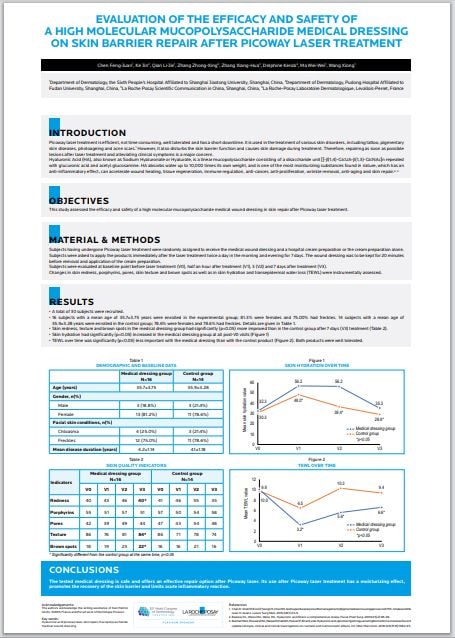L'Oréal Dermatological Beauty Pro is a digital community empowering healthcare professionals to improve their daily practice of dermatology through cutting-edge research, science and education on skin and hair care.
Evaluation of the efficacy and safety of a high molecular mucopolysaccharide medical dressing on skin barrier repair after picoway laser treatment
C. Feng-Juan, K. Jin, Q. Li-Jie, Z. Zhong-Xing, Z. Xiang-Hua, D. Kerob, M. Wei-Wei, W. Xiong
- 10min
- Jul. 2023
- Supported by

INTRODUCTION
Picoway laser treatment is efficient, not time consuming, well tolerated and has a short downtime. It is used in the treatment of various skin disorders, including tattoo, pigmentary skin diseases, photoageing and acne scars.1 However, it also disturbs the skin barrier function and causes skin damage during treatment. Therefore, repairing as soon as possible lesions after laser treatment and alleviating clinical symptoms is a major concern.
Hyaluronic Acid (HA), also known as Sodium Hyaluronate or Hyalurate, is a linear mucopolysaccharide consisting of a disaccharide unit [[-β(1,4)-GlcUA-β(1,3)-GlcNAc]n repeated with glucuronic acid and acetyl glucosamine. HA absorbs water up to 10,000 times its own weight, and is one of the most moisturizing substances found in nature, which has an anti-inflammatory effect, can accelerate wound healing, tissue regeneration, immune regulation, anti-cancer, anti-proliferation, wrinkle removal, anti-aging and skin repair.2,3
